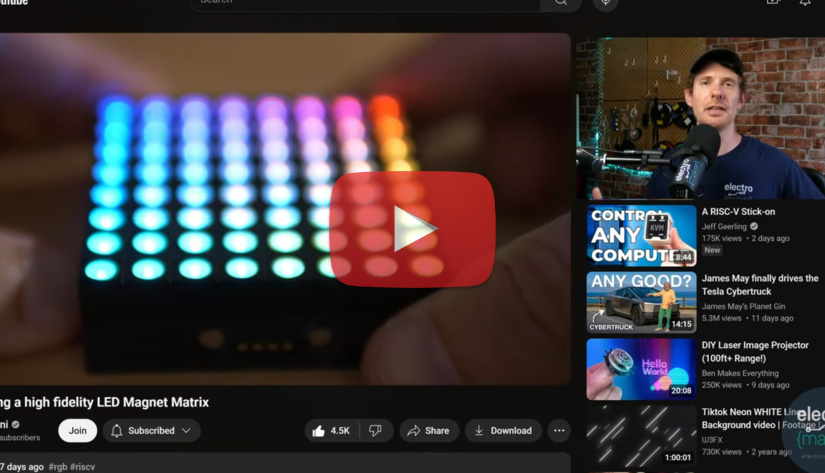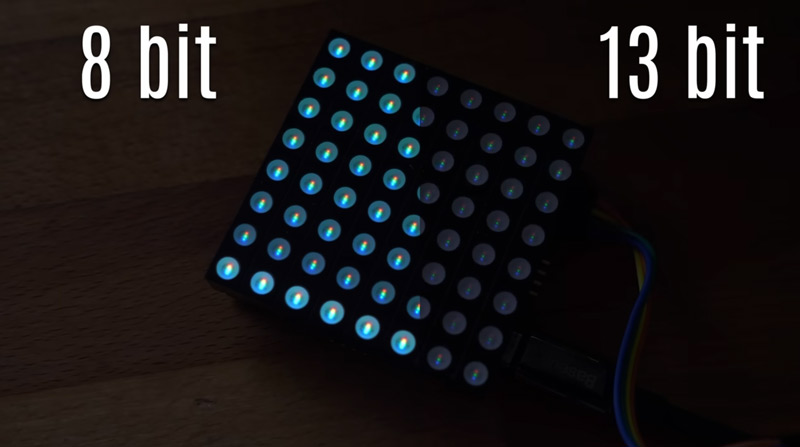Mastering LED Matrix Control: Bitluni’s Binary Code Modulation Approach
Bitluni, a well-known figure in the maker community, took on an exciting project using LED matrices that had been collecting dust for years. In his unique style, he developed a high-fidelity LED magnet matrix that quickly caught attention for its modular design and assembly through magnets. This innovative project is powered by a CH32V208 RISC-V microcontroller, a key component driving the impressive performance and connectivity between LED tiles.

Watch Ian talk about Bitluni's LED Magnet Matrix in this episode of The Electromaker Show
The ability to seamlessly attach the tiles and create stunning visual displays makes it one of the standout creations in Bitluni’s repertoire. Not only is the system visually captivating, but it also offers a broad range of functionality, showcasing Bitluni’s creativity and technical prowess.
High Frame Rate Challenges
One of the standout technical challenges in Bitluni’s LED magnet matrix project was controlling the LEDs at a high frame rate. To achieve this, he employed a technique called binary code modulation (BCM). This method differs from standard LED dimming techniques by offering enhanced control over brightness, making it a perfect choice for achieving smooth transitions and accurate color representation.

Community Engagement and Learning
True to Bitluni’s signature style, this project serves as a deep dive into the technical challenges that come with creating a high-fidelity LED matrix. In his YouTube video, Bitluni walks viewers through the hurdles he encountered, including tricky soldering techniques and ensuring proper alignment of the components. His transparent, step-by-step approach not only highlights the problem-solving aspect of the build but also offers valuable learning opportunities for both beginners and seasoned makers.
Bitluni’s hands-on method fosters a community of learners who can explore the project at various levels of complexity. By openly discussing his mistakes and how he corrected them, he engages viewers in the process, encouraging them to experiment with similar projects. For those wanting to dive deeper into the technical specifics, both
The adoption of BCM caught the attention of the maker community, sparking discussions on its effectiveness for high-speed LED displays. A Hackaday article by Julian Scheffers highlighted the importance of this approach, noting how it opens up new possibilities for hardware control and LED management. Bitluni's creative problem-solving continues to inspire deeper exploration into efficient LED control techniques, showcasing his ingenuity in tackling complex technical issues.
Did you enjoy this article?
Make sure you subscribe to The Electromaker Show for similar content and subscribe to our monthly newsletter!













































Leave your feedback...